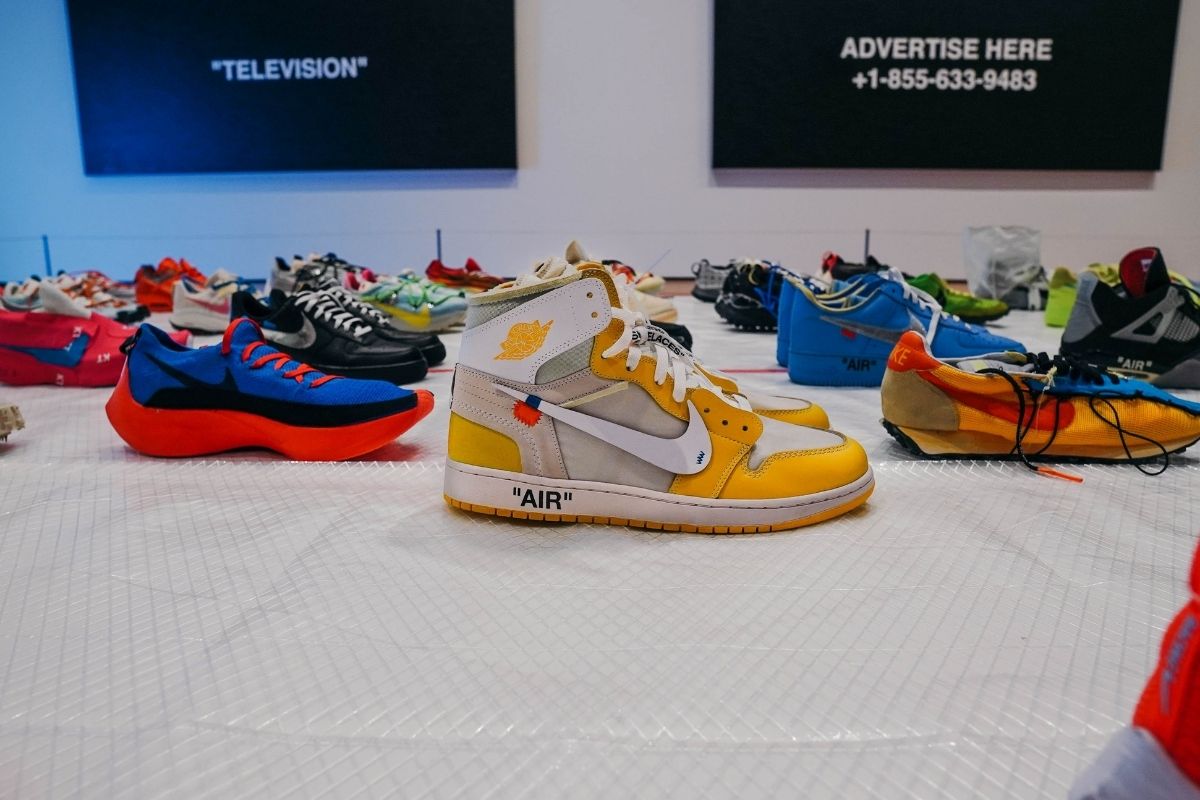You cannot talk about the popularity of sneakers without acknowledging their origins as part of the hip hop culture. Since the birth of hip hop in the 70s, sneakers have been the official footwear for the global phenomenon.
Sneakers Represent a Movement
Hip hop and its related elements were all about anti-establishment, youthful expression, and creativity. So it was only natural that sneakers represented that movement when you think about all the places you couldn’t go wearing them. They weren’t allowed in 70s clubs, churches, or restaurants. You couldn’t show up to work wearing sneakers or get married in them.
Sneakers were a marginalizing piece of footwear, but they created a stereotype of what kind of person you were. If you wore sneakers all the time, folks didn’t view you as living up to your full potential in becoming what you aspired to be.
Hip Hop Represented its Own Rules
In the hip hop culture, sneakers were part of the experience of expressing yourself through things like B-boying, graffiti, DJing, and MCing. This experience transformed into the rules that governed being a true hip hop person.
Furthermore, there were rules of originality that manifested through sneakers. These abiding rules still apply today. If my friend and I showed up somewhere wearing the same sneakers, we would have to find a way to make them look different. We would change the laces, use bleach, or spray paint stripes on them. These different methods were being used to ensure that we abided by the original hip hop rules. In the quest to make sure that we lived up to those rules came the birth of customized sneakers. These were created as a basic bonafide everyday way to honor the rules of hip hop. You can never disassociate what sneakers are today from the origins of the hip hop culture.
Run-DMC Recognition
In the early 80s, record labels were signing more hip hop artists, which led to more visibility and served as a reflection and representation of inner-city life. This was a pivotable moment for sneakers.
During the Raising Hell Tour at Madison Square Garden in 1986, Run-DMC performed their song called “My Adidas.” This song was a response to another song called “Fell Into Sneakers,” which was a disparaging song about people who wear sneakers. The lyrics sang about “felony cases committed by brothers with phat shoelaces.”
During Run-DMC’s live performance of “My Adidas,” they requested that concert-goers take their Adidas sneakers off and put them in the air. Some of those attendees were Adidas executives. Thousands of fans in the arena waved their shoes in the air.
The Adidas executives instantly saw the influence that the urban community had on trending and branding long before those words even existed. They saw how powerful the urban community could be when they got behind a particular product.
Shortly after that performance, Adidas gave Run-DMC an endorsement deal. This was huge because it was the first non-athletic endorsement deal by a global sportswear brand, let alone a sneaker company.
This endorsement spoke to the fact that Run-DMC were great ambassadors for what was already happening in the urban communities. Especially in New York, where they represented being from Queens. It also showed that no matter where their worldwide fame and stardom took them, the urban and hip hop aesthetic and rules went with them.
Laces Tied to the Hip Hop Culture
When it comes to sneaker education, you’ll learn that a lot of it is based on making the most of the little that you have. I came from a time when it wasn’t about having the most expensive or most colorful sneakers. It was just about being fresh, which meant that everything you had on was washed and clean. So when you live in a neighborhood where everyone has Bobos, you want to rock my Bobos fresher than everyone else.
For me, it started with the lacing styles. It wasn’t about having the most fly shoes. I was rocking hand-me-downs from my older cousins. We came from pretty humble beginnings, so we were just trying to have fun and be fresh at the same time. At the time, canvas sneakers and light suede basketball sneakers were the most popular. Chuck Taylors, City Brocades, Puma Clydes, and 69ers were more affordable options.
Shells were the opportunity of the day because they were on the higher end of affordable for the people in the hood at the time. But it wasn’t really about how much the sneakers cost; it was about being fresh and staying fresh. I knew dudes that would get a pair of kicks at the beginning of seventh grade, and the same sneakers would still be crispy at the top of eighth grade using just some dishwashing soap and a soft toothbrush.
Sneaker Industry
I think most people think that sneaker culture is primarily an American thing, but it’s spread throughout the world in different ways.
Europe
European sneaker culture evolved to a huge degree during the ’80s and ’90s because they had Adidas. Adidas was huge then, and it remains huge now. Europe also had Terrace culture, soccer stadiums, and football stadiums. People would stand, watching sports matches, wearing general Adidas sneakers. You could almost call them sports shoes. They are made for training. They are made for anything.
Adidas has been turning out sneakers for years. In America, you’d be hard-pressed to tell which year or era a sneaker came from because they all looked very similar. In addition, many new shoes have been reintroduced as retro models. However, Adidas in Europe have more significant distinctions between them, so people who grew up with a specific model have more memory connections with that particular design.
Japan
I think the sneaker culture in Japan took a lot of inspiration from the American market and then hit it back to us. It’s almost like we served it to them before they returned it back to us with a whole lot of backspin on it.
Take a look at resale shops in New York or LA. such as Stadium Goods, Flight Club, or Rif LA. The iconic way that the sneakers are presented — shrinkwrapped on the shelves — is something that came over from Japan.
All of this came from a time when it seemed like Japan almost valued American culture more than we did. I remember a time when people in America were selling Air Jordans to people in Japan because they would pay top dollar for them. I’ve heard stories about people clearing out thrift stores of brands like Nike and Levis then selling them to people in Japan to make a profit. This was during a time when Japan cherished these things more than we did.
The Shift
The exchange with Japan eventually turned back around on America though. Japan started getting limited-edition things that America now wanted. Nike CO-JP program made shoes specifically for the Japanese shoe market. They got their own Dunks, Air Force Ones, and Colorways. These were marketed only in Japan, making them even more coveted here in America.
What started with Japanese consumers desperately wanting things from America turned into products being explicitly made for the Japanese market, then ended with American consumers desperately wanting products from Japan. There are still shoes to this day that are hard to find and highly coveted in America.
Export Sneaker Culture
During your online sneaker education, it’s important to take a look at new sneaker markets that are trying to open. Furthermore, study Nike or Adidas as they expand their markets in America. You’ll see that it’s difficult to expand a market like that at such a high level. Are they able to get American consumers who already own 100 pairs of shoes that they don’t know what to do with to buy even more? Maybe it’s better to open a Chinese or Indian market with billions of potential new consumers. Perhaps it’s better to try and export sneaker culture again and get it going somewhere else in their own way.



